Ever dreamed of being a "Castaway"? For me as a schoolboy it was a very romanic notion and if I'm honest it still has some appeal. I guess there is only so long you can resist the comforts of modern day living though but the benefit of being on an island is that feeling that you are detached and liberated from the rest of the world.
I first visited the Isle of May in 2012 and it's become a love affair, each year I have been called back and each year I have been lucky enough to be accommodated with a week's stay both as a pure visitor and as a volunteer. The first visit was in stark contrast to what is there today and a lot of hard work and effort has gone in to transforming what was basic accommodation with no electricity, just gas for cooking and running very limited refrigeration, and just a chemical "Porta Potty" for toilet facilities.
Back in 2012 and my first visit was inspired by a report I'd read by someone who had stayed there previously and who had witnessed some amazing views of a Merlin, a bird I had always wanted to see and photograph. I persuaded my friend Mike to go with me and that was the beginning of an annual trip we have taken to somewhere in Europe every year since. This year as well as joining me on a trip to Estonia I suggested he came back to "the May" to see the changes for himself. Besides this time we'd be there at the height of the breeding season and not in a cold damp April as we had been back in 2012.
I knew he'd be impressed, the changes have been amazing in such a short period of time.
Our accommodation, the "Low Light", a disused light house has been extended to provide more room, more comfort.
In 2012 the Low Light looked like this
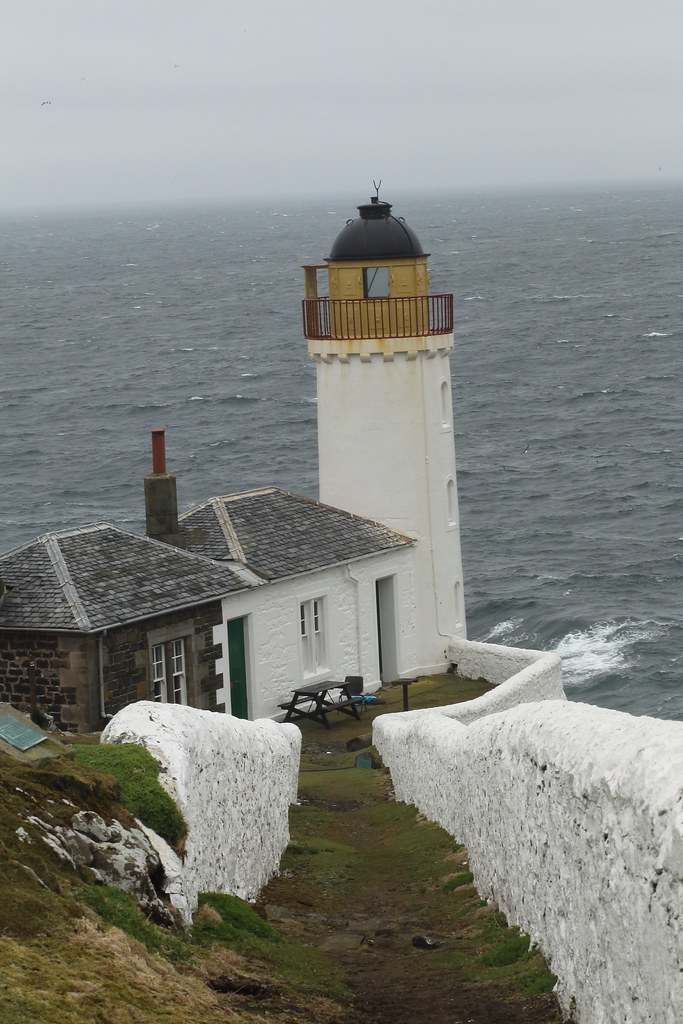
In 2018 it has a large extension housing 3 bedrooms, a toilet and a shower room
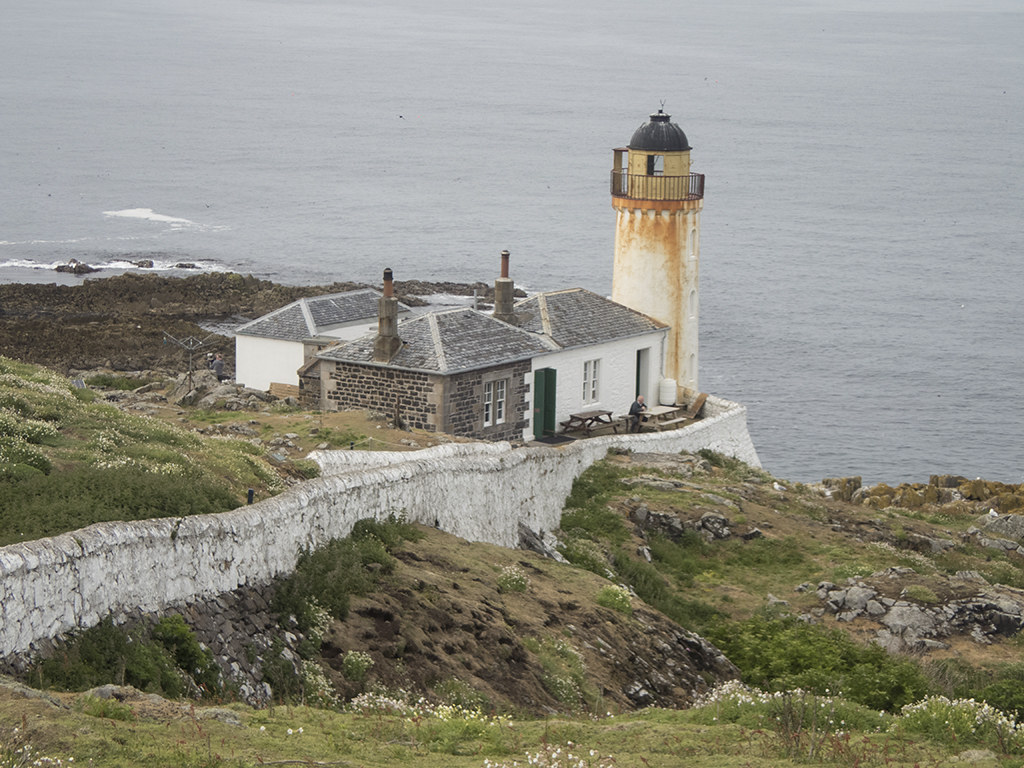
The Low Light is the home of the I.O.M Bird Observatory and to which I belong as a member. The Lighthouse Tower doesn't form a part of the accommodation and it's sad to see it's not getting the benefit of the maintenance it needs.
Maybe a paint company might see this and decide it would make a great before and after advert! One of the problems though is that being an island transporting everything needed for any kind of maintenance is a problem. It all has to come by boat although until recently oil supplies to run the still working Main Light came by helicopter drop.

That is no longer needed though as the power supply was recently changed to solar.
So that's the attraction then. A small island, just a few miles off the Scottish mainland sharing the accommodation with just 5 other people. There are others to share the island with, there's the warden and his assistant, along with a few researchers who monitor the annual events taking place on the island with 200,000+ nesting seabirds as well as good numbers of breeding seals too.
The hub of their activity is known as Fluke Street, originally built to house generators and a coal store.( lots of interesting background available:- https://en.wikipedia.org/wiki/Isle_of_May
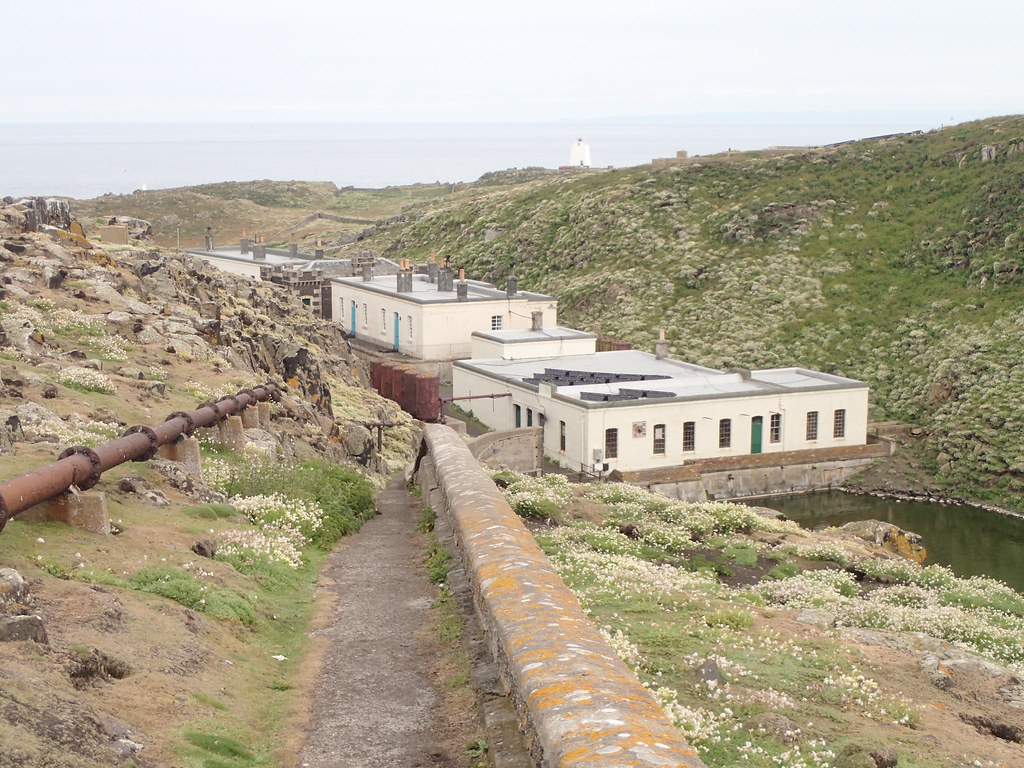
the buildings are a 10 minute walk from the Low Light so you still have a feeling of complete isolation, well except for a couple of hours a day when up to 120 day trippers arrive to explore.
And what a place to explore it is too! As well as the islands "industrial" and religious history, you do have all those birds and an opportunity to get up close and personal and to observe the rigours of daily life each of the resident species has to endure.
And endure they do. This year was a particularly bad start when a storm dubbed "the beast from the east" hit the whole of Europe and put the arrival of many birds and their breeding programme back many weeks. This impacted on our visit as much of the hoped for activity we expected to see wasn't happening. This was disappointing but such is the unpredictable way of nature and wildlife.
A minor storm struck whilst we were on the island
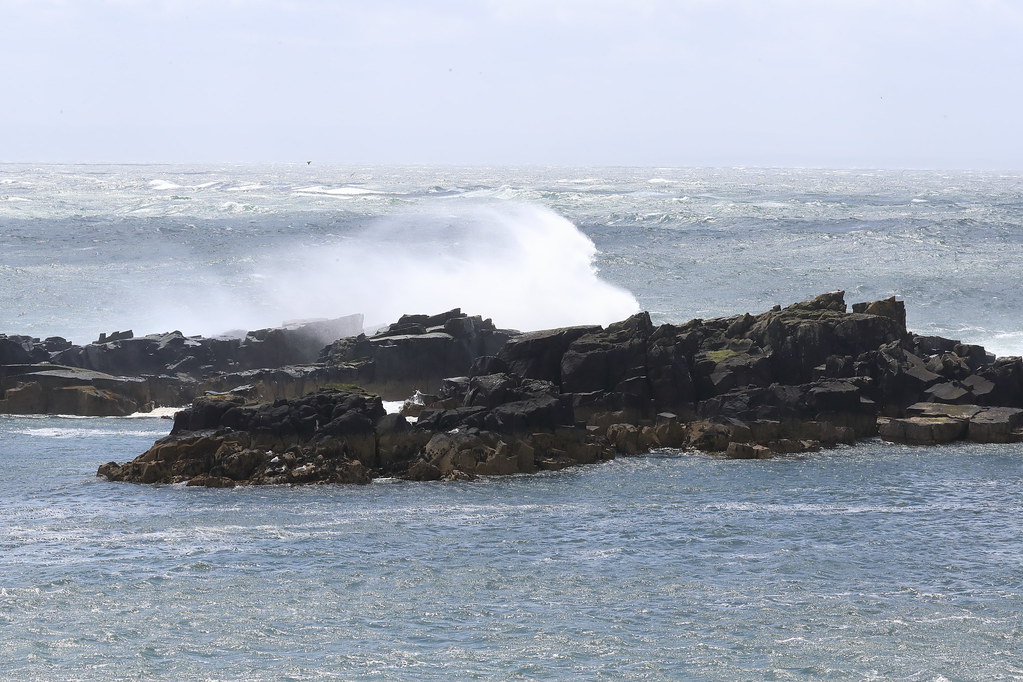
and although it's impact was less than originally feared it was still estimated that as many as 450 Guillemot and Razorbill "nests" might have been washed or blown off the cliff face that took the brunt of the above average sized waves the storm produced.
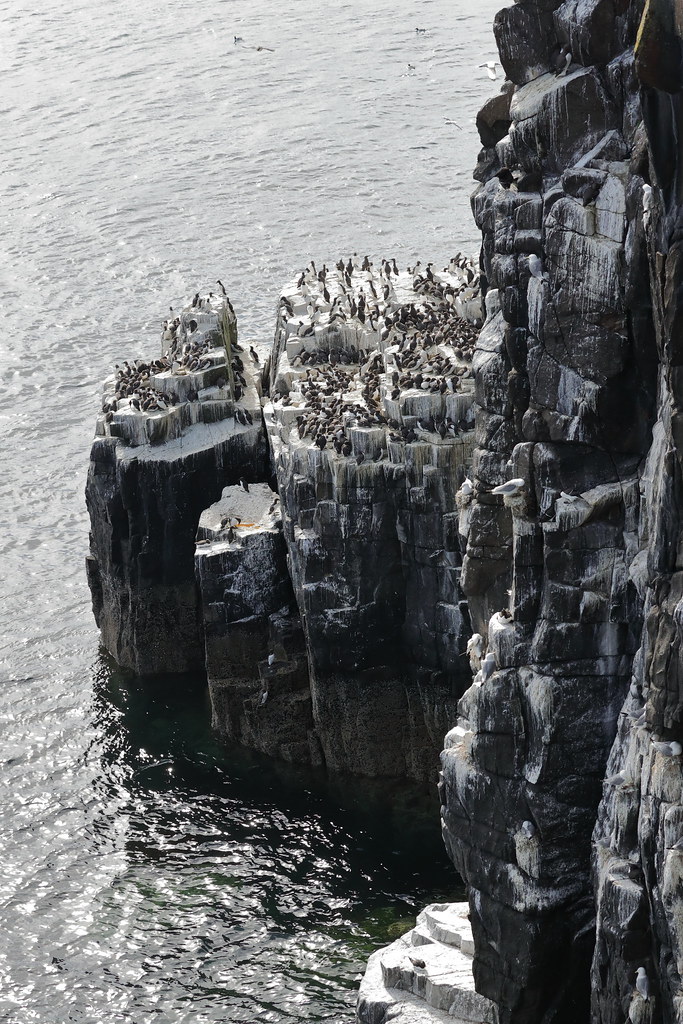
A beautifully calm sea and idyllic spot
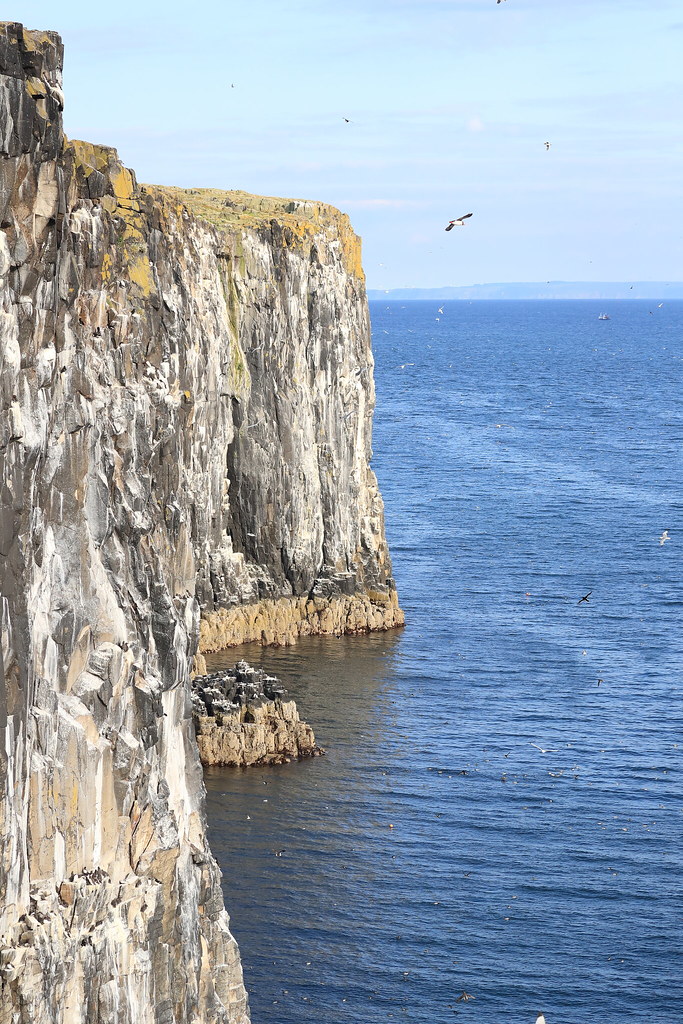
was still a cauldron of waves 24 hours after the storm passed through
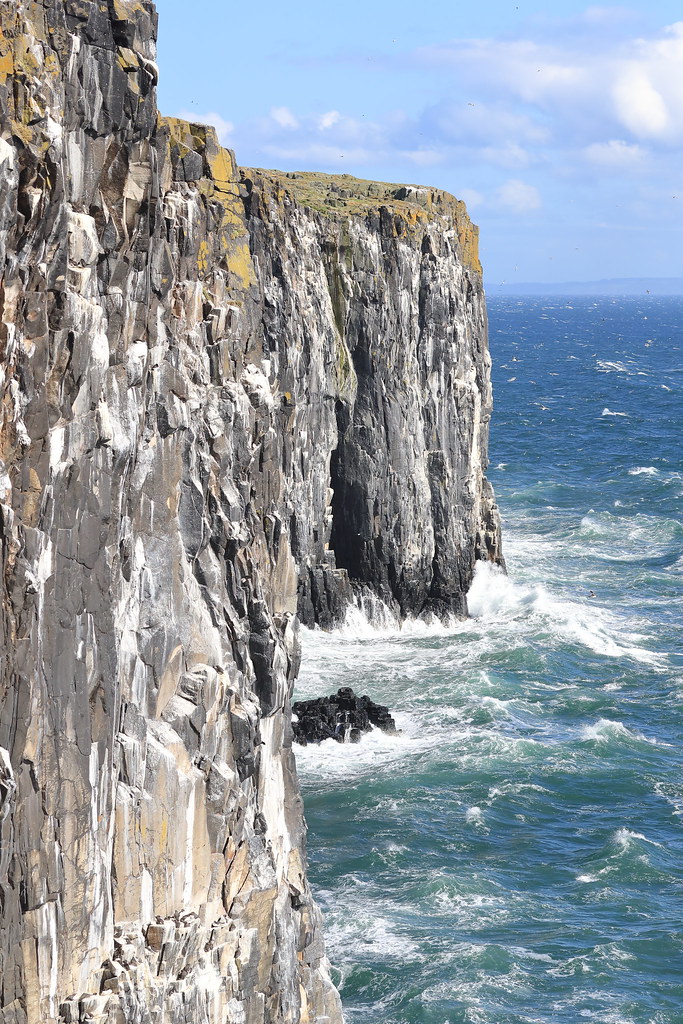
Life on the island down the ages has never been easy for the human inhabitants, you can still find yourself marooned there for several days if the boats are unable to dock, but for the bird life it really is a constant fight for survival.
TBC
I first visited the Isle of May in 2012 and it's become a love affair, each year I have been called back and each year I have been lucky enough to be accommodated with a week's stay both as a pure visitor and as a volunteer. The first visit was in stark contrast to what is there today and a lot of hard work and effort has gone in to transforming what was basic accommodation with no electricity, just gas for cooking and running very limited refrigeration, and just a chemical "Porta Potty" for toilet facilities.
Back in 2012 and my first visit was inspired by a report I'd read by someone who had stayed there previously and who had witnessed some amazing views of a Merlin, a bird I had always wanted to see and photograph. I persuaded my friend Mike to go with me and that was the beginning of an annual trip we have taken to somewhere in Europe every year since. This year as well as joining me on a trip to Estonia I suggested he came back to "the May" to see the changes for himself. Besides this time we'd be there at the height of the breeding season and not in a cold damp April as we had been back in 2012.
I knew he'd be impressed, the changes have been amazing in such a short period of time.
Our accommodation, the "Low Light", a disused light house has been extended to provide more room, more comfort.
In 2012 the Low Light looked like this

In 2018 it has a large extension housing 3 bedrooms, a toilet and a shower room

The Low Light is the home of the I.O.M Bird Observatory and to which I belong as a member. The Lighthouse Tower doesn't form a part of the accommodation and it's sad to see it's not getting the benefit of the maintenance it needs.
Maybe a paint company might see this and decide it would make a great before and after advert! One of the problems though is that being an island transporting everything needed for any kind of maintenance is a problem. It all has to come by boat although until recently oil supplies to run the still working Main Light came by helicopter drop.

That is no longer needed though as the power supply was recently changed to solar.
So that's the attraction then. A small island, just a few miles off the Scottish mainland sharing the accommodation with just 5 other people. There are others to share the island with, there's the warden and his assistant, along with a few researchers who monitor the annual events taking place on the island with 200,000+ nesting seabirds as well as good numbers of breeding seals too.
The hub of their activity is known as Fluke Street, originally built to house generators and a coal store.( lots of interesting background available:- https://en.wikipedia.org/wiki/Isle_of_May

the buildings are a 10 minute walk from the Low Light so you still have a feeling of complete isolation, well except for a couple of hours a day when up to 120 day trippers arrive to explore.
And what a place to explore it is too! As well as the islands "industrial" and religious history, you do have all those birds and an opportunity to get up close and personal and to observe the rigours of daily life each of the resident species has to endure.
And endure they do. This year was a particularly bad start when a storm dubbed "the beast from the east" hit the whole of Europe and put the arrival of many birds and their breeding programme back many weeks. This impacted on our visit as much of the hoped for activity we expected to see wasn't happening. This was disappointing but such is the unpredictable way of nature and wildlife.
A minor storm struck whilst we were on the island

and although it's impact was less than originally feared it was still estimated that as many as 450 Guillemot and Razorbill "nests" might have been washed or blown off the cliff face that took the brunt of the above average sized waves the storm produced.

A beautifully calm sea and idyllic spot

was still a cauldron of waves 24 hours after the storm passed through

Life on the island down the ages has never been easy for the human inhabitants, you can still find yourself marooned there for several days if the boats are unable to dock, but for the bird life it really is a constant fight for survival.
TBC
No comments:
Post a Comment